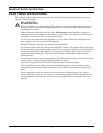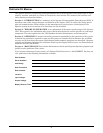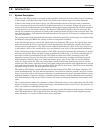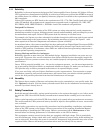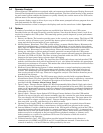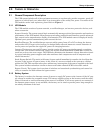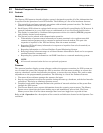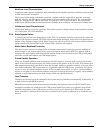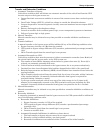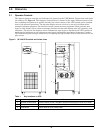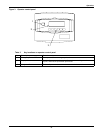
Theory of Operation
8
2.0 THEORY OF OPERATION
2.1 General Component Description
The UPS system includes all of the equipment necessary to continuously provide computer- grade AC
power to a critical load, even when there is an interruption of the utility line power. It consists of the
UPS modules and a back-up battery plant. Refer to Figure 2.
2.1.1 UPS Module
The UPS module consists of system controls, a rectifier/charger, an inverter, protective devices, and
other accessories.
System Controls: The system control logic automatically manages critical bus operation and monitors
performance of the UPS module. Microprocessor technology and dedicated firmware provide advanced
logic control and a comprehensive display of information. The UPS module status is displayed locally.
Optional ports permit communicating with external devices.
Rectifier/Charger: The rectifier/charger converts utility power from AC to DC to charge the battery
and provide the DC input to the inverter. Its design limits reflected harmonic current distortion to
source power and provides low-ripple DC power for charging batteries.
Inverter: The inverter converts DC power into the precise AC power required to supply a sensitive
critical load. The inverter converts DC power into a pulse-width-modulated (PWM) that is easily fil-
tered into a clean sine wave output. The PWM also minimizes the harmonic voltage distortion caused
by typical switching power supplies and other nonlinear load components used in computers and
related electronics.
Static Bypass Switch: The static (solid-state) bypass switch immediately transfers the load from the
inverter to the bypass AC power source in the event of a severe overload on the system or a failure
within the UPS. This transfer takes place without any interruption of the power supplied to the load.
The system includes redundant circuits to detect and isolate shorted SCRs in the static switch.
Bypass Circuit: The bypass circuit consists of switches and associated synchronizing and control cir-
cuitry to transfer the load to/from the bypass source.
2.1.2 Battery System
The battery is used as the alternate source of power to supply DC power to the inverter if the AC sup-
ply voltage is outside the acceptable range. The battery supplies power to the inverter until the utility
power is restored or until an alternate power source is available. If AC source power is not restored or
an alternate power source is not available, the battery can be sized to provide power long enough for
an orderly shutdown of the load.




